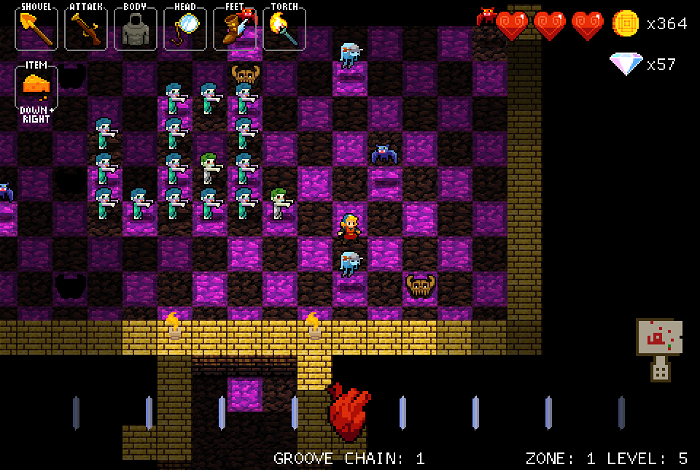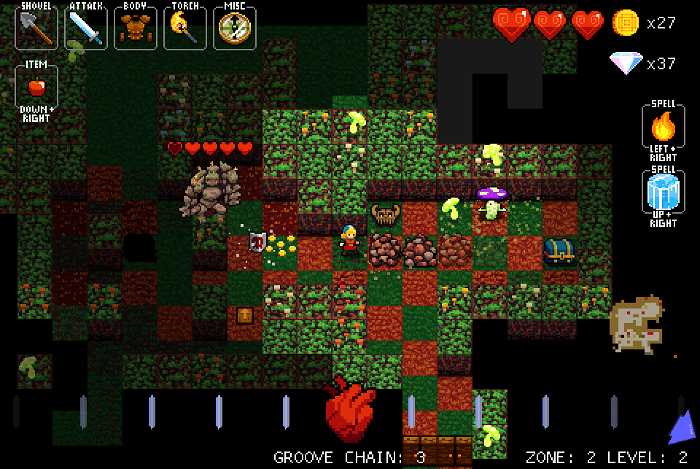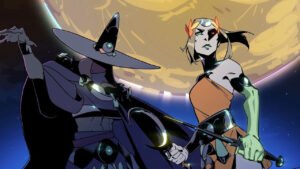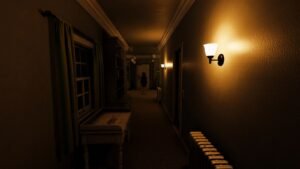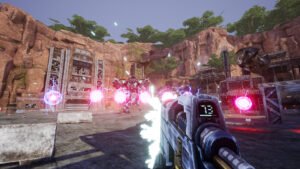I don’t know that I’ll ever be able to actually finish Crypt of the NecroDancer’s gruelling final level. But it doesn’t seem to matter. After nearly every one of my deaths—whether roasted alive by a giant red dragon or overwhelmed by a group of dancing skeletons—I’ve immediately jumped back into Brace Yourself Games’ rhythmic take on the action/RPG end of the roguelike genre, eager to attempt yet another expedition into its dungeons. I think this desire to willingly subject myself over and over to the intense difficulty of the game says quite a lot about its appeal.
Though NecroDancer hangs out in the same territory as modern roguelike titles like Rogue Legacy, The Binding of Isaac, and Spleunky, it’s very much its own game. On a mechanical level it, too, is an extremely punishing and highly mutable test of endurance. Players must control Cadence (or one of several unlockable characters) as she ventures through caverns filled with monsters, collects randomized treasure, and attempts to avoid a defeat that will kick her straight back to the beginning of one of the game’s “Zones (large stages, filled with multiple levels and capped off with a boss battle). The twist, though, is that all of NecroDancer’s movement and combat is tied intrinsically to the rhythm of its soundtrack.
“Brace Yourself Games’ ability to replicate the dynamic that exists in musical collaboration is probably the most impressive aspect of NecroDancer..”
Each one of Cadence’s movements takes the form of a single, dance-like hop that transports her from one square tile of floor to another. Every action in the game is controlled in this minimalist fashion, the player hitting one of their keyboard’s arrow keys in a given direction to avoid or attack enemies, open treasure chests, buy upgrades, and dig through the walls.
The mechanics are simplified in this way because the player must match every action to the backbeat of the pulsing electronic music playing throughout the levels. NecroDancer’s rhythm mechanic asks the player to tap their keys along with the tempo of the score (neatly visualized by a throbbing heart at the bottom centre of the screen) in order to earn money multipliers and, more importantly, predict monster movements. More than a novelty, the beat-matching aspect of the game is directly coupled with the preset behaviours of each dungeon’s various beasties. In an early instance, a blue blob will dance up and down over a range of two tiles, only exposing its weak spot when Cadence attacks from the side. By failing to keep in step with the rhythm, enemy patterns become harder to monitor and exploit.
If these gameplay systems sound complicated, rest assured that actually learning them is pretty intuitive. Although first entering one of NecroDancer’s Zones is always an overwhelming introduction to new monster varieties, each with its own unique movement and attack patterns, learning how to recognize and overcome these patterns is half the fun of the game. Sure, NecroDancer is an extremely difficult game, but once you’ve found your groove, there’s the wonderful pay-off of interacting with a game that, at the best of times, echoes the sensation of performing music in a group.
Brace Yourself Games’ ability to replicate the dynamic that exists in musical collaboration is probably the most impressive aspect of NecroDancer, and a huge part of why it’s so compulsively playable. When everything is going well—when Cadence is weaving in and out of monster patterns, taking out a roomful of threats to the soundtrack’s beat—the player feels like another instrument contributing to the composition of the score. This is something unique in a game not explicitly designed to emulate the performative aspect of music (like Guitar Hero or Rock Band), and sets NecroDancer apart from other entries to the increasingly popular modern roguelike genre.
None of it would come off nearly as well if it wasn’t for a great soundtrack by Danny Baranowsky, the composer responsible for Super Meat Boy, Canabalt, The Binding of Isaac, and Desktop Dungeons. Baranowsky’s score is wonderfully suited to the game, always urging the player on through its levels with music full of hypnotic synthesizer melodies and lovingly bombastic electro-guitar riffs. It’s testament to Baranowsky’s talent that, even at the most frustrating moments of defeat, his score never grates. It’s music meant to be attentively listened to, over and over again, and feels just as important to the game as its visuals and gameplay mechanics.
Crypt of the NecroDancer, it should be mentioned, is in Early Access and its title screen warns players that the current unfinished build is filled with placeholder art and music. Luckily, these shortcomings aren’t immediately obvious. The game is already substantial from a content standpoint—it includes a daily challenge leaderboard, checkpoint-free “hardcore mode,” and two player local co-op alongside its nearly complete single-player campaign—and, aside from a few weird menu options, looks and sounds as polished as a finished experience. The promise of further unlockable characters, levels, and boss battles will only add extra length to a game that, even incomplete, offers a great deal of compelling—and extremely difficult—play.

